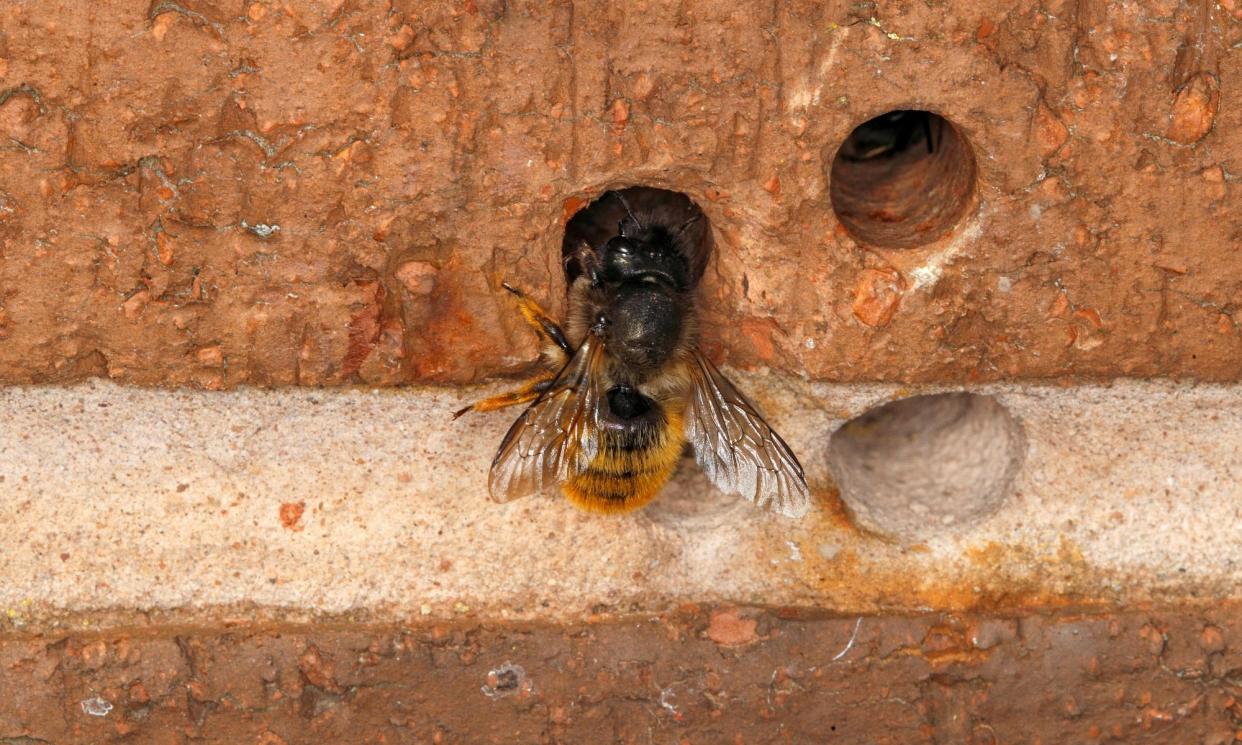Country diary: A solitary bee thrives amid the wet

The swallows flit in and out of the stable, greeted by a chorus from their open-mouthed chicks. The farrier is here applying a hot shoe to a hoof, and the air fills with a cloud of smoke.
Then, beside me, a bee emerges from the brickwork. The weather has been distinctly bee-unfriendly of late, as the rain continues to fall, but this one is a fine specimen: fluffy, ginger, with big black eyes and long antennae protruding above. I’m face to face with a solitary bee, one of the 250 species found in the UK. Solitary bees live up to their name – they don’t nest in colonies, although often good nesting conditions can attract many individuals to the same area.
This one is a mason bee, which favour crevices in crumbling mortar and old brickwork. Modern bricks, cemented together, leave few opportunities for nesting, but here, spaces have been provided by my dad, who has drilled holes into the solid wall and inserted canes.
The female lays her eggs one at a time, leaving each in a cell with a stash of pollen and nectar ready for the larvae to feed on when they hatch, then each cell is sealed with mud. While she is constructing the nest, she marks it with a unique lemony scent, to ensure it can be located easily.
After a while, this bee returns and heads back into the hole laden with pollen. But then another bee arrives and heads into the same tube. It soon reverses and exits, but looks slightly different, less fluffy. Maybe it’s another of the same species, also looking for a place to lay her eggs, or could it be a cuckoo bee?
Like their namesake bird, cuckoo bees lay their eggs in the nest of another female. When their young hatch, they eat the food supplies meant for the larvae of the original bee, and sometimes eat them too. Cuckoo bees look like the species they target, but lack the pollen-collecting hairs as they rely on the food provided by the host bee.
Solitary bees, often unnoticed or overlooked, fulfil vital roles as pollinators, just like bumblebees and honeybees. When I check a few days later, the tube is all sealed up with mud, and the swallows are even noisier.
• Country diary is on Twitter at @gdncountrydiary

 Yahoo News
Yahoo News 
